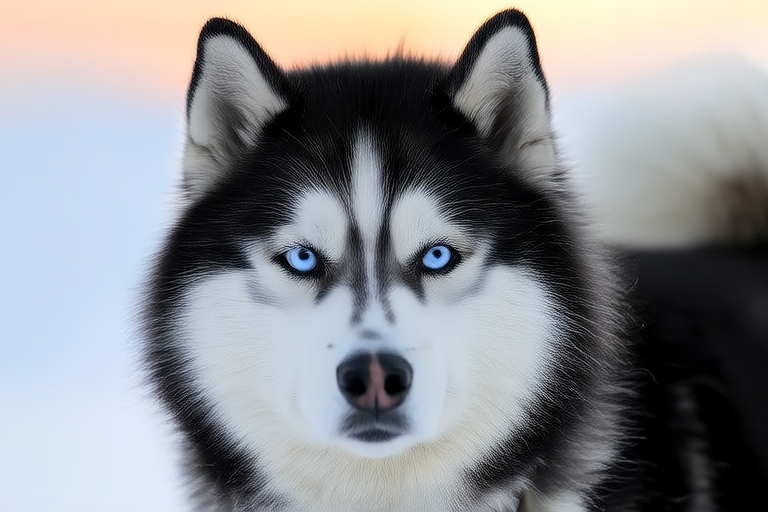The Enigmatic Siberian Husky: A Comprehensive Guide
Siberian Huskies have long captivated the hearts and minds of dog lovers with their striking appearance and mysterious aura. These dogs, known for their wolf-like features and spirited demeanor, are more than just beautiful; they are also deeply rooted in history and culture. This article delves into the unique characteristics and behaviors of Siberian Huskies, exploring their origins, physical attributes, intelligence, communication styles, and much more.
History and Origins
The Siberian Husky originates from the Chukchi people of Northeastern Asia. These nomadic tribes bred the Siberian Husky to pull sleds across vast distances in harsh winter conditions. Their breeding focused on creating a dog that could endure extreme cold, maintain stamina over long distances, and work effectively as part of a team. The Siberian Husky’s ancestors were likely domesticated wolves, which explains their strong prey drive and independent nature. In 1909, Siberian Huskies first arrived in Alaska during the gold rush era, where they quickly became popular as sled dogs due to their endurance and speed. They played a crucial role in the famous serum run to Nome in 1925, transporting life-saving diphtheria antitoxin through treacherous terrain.
Physical Attributes
Siberian Huskies are medium-sized dogs with a distinctive appearance. They have thick, double-layered coats that protect them from the elements. Their eyes come in various colors, including blue, brown, and heterochromia (two different colored eyes). This genetic variation contributes to their unique and captivating look. Their ears are triangular and stand erect, adding to their alert and attentive demeanor. Siberian Huskies have a muscular build, with strong legs designed for efficient movement. Their tails curl over their backs when they are cold, acting as a natural blanket. Despite their robust appearance, they are relatively lightweight, making them agile and swift runners.
Intelligence and Communication Styles
Siberian Huskies are intelligent and quick learners. However, their independent nature can sometimes make training challenging. They require patient and consistent training methods, emphasizing positive reinforcement. Siberian Huskies communicate through vocalizations, body language, and facial expressions. They often howl or bark to express emotions, such as excitement or anxiety. Understanding their communication cues is essential for effective interaction and training.
Temperament and Loyalty: Myths vs. Facts
One common myth about Siberian Huskies is that they are aloof and unaffectionate. While they may appear reserved at times, they are loyal companions who form strong bonds with their families. Another misconception is that Siberian Huskies are aggressive. In reality, they are generally friendly and gentle, though their strong prey drive means they may not be suitable for homes with small pets. Scientific studies have shown that Siberian Huskies exhibit high levels of oxytocin, the “love hormone,” indicating their capacity for deep emotional connections.
Energetic Nature and Training Challenges
Siberian Huskies are known for their high energy levels and need for regular exercise. They thrive in environments where they can engage in physical activities, such as running, hiking, or participating in dog sports. Without adequate outlets for their energy, they may become destructive or develop behavioral issues. Training Siberian Huskies requires patience and consistency. Positive reinforcement techniques, such as treats and praise, are highly effective. It is important to establish clear boundaries and rules early on to ensure proper behavior. Socialization is also crucial, as Siberian Huskies can be wary of strangers if not properly introduced to various people and situations.
Dietary Needs
Siberian Huskies have specific dietary requirements to maintain their health and energy levels. They require a balanced diet rich in protein, fat, and carbohydrates. High-quality commercial dog food formulated for active breeds is recommended. Owners should consult with veterinarians to determine the appropriate portion sizes based on their dog’s age, weight, and activity level. Fresh water should always be available, especially after exercise. Proper nutrition is vital for preventing health issues and ensuring optimal performance.
Stories and Scientific Studies
Several stories and scientific studies highlight the unique qualities of Siberian Huskies. One notable example is Balto, the lead dog of the 1925 serum run to Nome. Balto’s bravery and endurance during this historic event captured the public’s imagination and solidified the breed’s reputation as reliable and resilient working dogs. Scientific research has also explored the genetic basis of the Siberian Husky’s distinctive traits. For instance, a study published in the journal Science identified a gene associated with the breed’s blue eyes and piebald coat pattern. Another study examined the Siberian Husky’s ability to navigate using scent, revealing that they possess an exceptional sense of smell, further enhancing their reputation as skilled working dogs.
Advice for Potential Owners
Considering adopting a Siberian Husky? Here are some key points to keep in mind:
- Commitment to Exercise: Be prepared to provide ample opportunities for your Siberian Husky to burn off excess energy. Regular walks, runs, and playtime are essential.
- Training Patience: Siberian Huskies require consistent and patient training. Use positive reinforcement techniques to encourage good behavior.
- Preventive Care: Regular veterinary check-ups, vaccinations, and dental care are crucial for maintaining your dog’s health. Consider heartworm prevention and flea/tick control.
- Proper Nutrition: Feed your Siberian Husky a balanced diet tailored to their needs. Consult with your veterinarian to determine the best feeding plan.
- Spay/Neuter: Spaying or neutering your Siberian Husky can prevent unwanted pregnancies and reduce the risk of certain health issues.
- Prepare for Grooming: Siberian Huskies shed heavily, particularly during seasonal changes. Invest in quality grooming tools and be prepared for frequent brushing.
With the right care, training, and attention, Siberian Huskies can become loving and loyal companions. Their enigmatic charm and remarkable abilities continue to fascinate and inspire people around the world.
